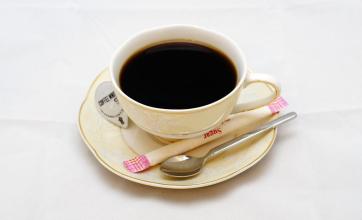Indonesia Mantenin Coffee Flavor description Grinding characteristics introduction to the taste of high-quality coffee beans in producing areas
Asia's best-known coffee producers are the Malay islands of Sumatra, Java and Kalimantan. Sumatra mantinin coffee from Sumatra, Indonesia is the most famous of these, and it has two famous names, Sumatra mantinin DP First Class and Sumatra Mantinin Collection. Sumatra Mantenin DP has a long aftertaste and a wild fragrance, which is characteristic of the earthy taste of the virgin forest. In fact, Mantenin's mellowness was a very masculine feeling. A good quality first class mantelin coffee has a light acidity, like the slight acidity of flowers and fruits. In addition to Indonesian coffee's characteristic rich flavor, there is also a bitter sweet flavor, which is very popular with people who like strong roast coffee; the collection Sumatra mantinin coffee is called "collection" because it is stored in the cellar for three years before export. But reserve coffee is not old coffee, but a slightly pale coffee that has been specially treated. This coffee is stronger, the acidity will be reduced, but the alcohol will increase, and the aftertaste will be longer. It will also have a strong spicy taste, sometimes bitter, sometimes walnut, and sometimes chocolate. Before Blue Mountain coffee was discovered, mantnin was considered the best coffee. It is interesting to note that while Indonesia produces some of the finest coffee in the world, Indonesians prefer Turkish-style coffee sellers often label Lintong Lindong and Mandheling Mandheling as dry processed. In fact, the pulp is often separated from the coffee seeds by a variety of mixing modes, more commonly a backyard wet treatment. Clever farmers put freshly picked coffee cherries into a crude peeling machine assembled from scrap metal, wood and bicycle parts. The peeled, sticky beans are then fermented overnight in plastic woven bags. The next morning, wash off the soft, fermented pulp and stickiness by hand. The silver-coated coffee is pre-dried on a sheet in the front yard and sent to a middleman's warehouse where the silver is removed and further dried. Finally, the coffee is trucked to Medan Port (capital of Sumatra) for the third and final drying. It has also been reported that in other Mandheling regions, after removal of the pericarp, the mucilage is allowed to dry and adhere to the beans, as is done in Brazil with semi-washing. After that, the dried slime and silver skin are removed by machine. Finally, the same two-stage drying process takes place, first at the warehouse of the middleman and then at the warehouse of the exporter in Medan Port.
Process with Sumatra characteristics. I describe these processes in such detail because it is not clear to what extent soil and atmosphere and unusual treatment techniques and three-stage drying each influence the formation of the characteristics of Linton and Mantenin coffee. Only one thing is certain. These treatments occasionally produce excellent coffee but are also extremely unstable. Only relentless picking in the export warehouse of Medan Port can guarantee the depth of texture and unique, understated richness of Lintong and Mandheling, emerging from the interference of other odors.

Important Notice :
前街咖啡 FrontStreet Coffee has moved to new addredd:
FrontStreet Coffee Address: 315,Donghua East Road,GuangZhou
Tel:020 38364473
- Prev

Fragrant Yunnan small Coffee Huaguoshan Coffee grindability characteristics Variety description of producing area
According to reports, in 1892, French missionary Father Tian used coffee fruit to breed the first coffee tree outside the church, and then cultivated more coffee trees and planted them around the church. Since then, the village of Zhukula began to grow coffee, and the village has been surrounded by coffee trees ever since. The two oldest elders in the village, Qi Guanghui and Li Fu
- Next

Flavor description of Panamanian boutique coffee with bright flavor introduction to the taste characteristics of varieties in producing areas
In fact, Panamanian coffee has not received due recognition and attention in the boutique coffee market. Good Panamanian coffee has always been used by unscrupulous businessmen to imitate Hawaiian kona coffee and even Jamaican Blue Mountain coffee. Panamanian coffee generally belongs to the low and medium price, but its performance in the cup is often as good as that of any famous or even expensive famous coffee products.
Related
- Detailed explanation of Jadeite planting Land in Panamanian Jadeite Manor introduction to the grading system of Jadeite competitive bidding, Red bid, Green bid and Rose Summer
- Story of Coffee planting in Brenka region of Costa Rica Stonehenge Manor anaerobic heavy honey treatment of flavor mouth
- What's on the barrel of Blue Mountain Coffee beans?
- Can American coffee also pull flowers? How to use hot American style to pull out a good-looking pattern?
- Can you make a cold extract with coffee beans? What is the right proportion for cold-extracted coffee formula?
- Indonesian PWN Gold Mandrine Coffee Origin Features Flavor How to Chong? Mandolin coffee is American.
- A brief introduction to the flavor characteristics of Brazilian yellow bourbon coffee beans
- What is the effect of different water quality on the flavor of cold-extracted coffee? What kind of water is best for brewing coffee?
- Why do you think of Rose Summer whenever you mention Panamanian coffee?
- Introduction to the characteristics of authentic blue mountain coffee bean producing areas? What is the CIB Coffee Authority in Jamaica?

